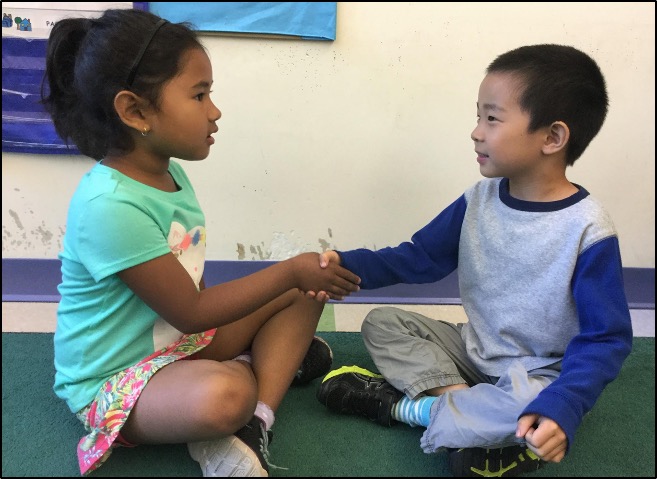Greeting every child at the beginning of the day provides children with a sense of community and belonging. Children learn one another’s names, build connections, and develop caring and welcoming practices. Greeting others and being greeted by others sets a positive tone for the day.
Start with a simple greeting. Initially, the teacher can model by greeting each child in a simple manner. This may be a name song or a handshake and saying “good morning.” Once children have developed comfort with being greeted by the teacher, explicitly teach the children how to “pass” a greeting from one friend to another around the circle.
For a greeting to be successful, teach children to:
- Orient their bodies to face their peer
- Make eye contact
- Say “Good morning, ______,” or any other verbal greeting
- Use their peer’s name
- Complete the movement (elbow tap, handshake, high five, etc.)

Greeting Trajectory: Working Up to a Reciprocal Greeting
Introduce greetings in a scaffolded order:
- Teacher greets individual child by name
- Welcome Song (Second Step)
- The More We Get Together Song
- Child says own name
- Name Song
- Greet neighbor by passing a greeting
- Pass a heart shape as you greet person – “I am passing kindness to _____.”
- Pass a new material (such as a pattern block) as you say, “Hi _____. We could play with pattern blocks today.”
- Reciprocating Greeting with neighbor
- Shake hands while saying, “Good Morning.”
- Greet as many people as you can in one minute (end of the year)
Repeat new greetings for 2-4 weeks until children have reached mastery. Then, add new greetings one at a time, occasionally practicing previously introduced greetings. Once your class has developed a repertoire, children can choose the daily greeting. Having a visual chart of the greetings they have mastered supports children in selecting a greeting.